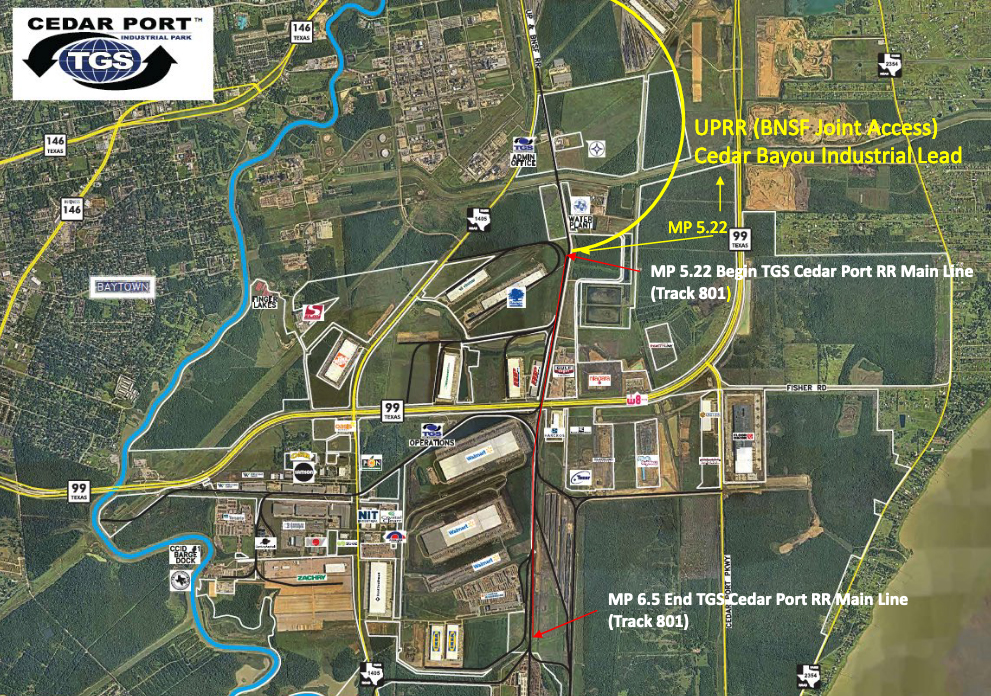
WASHINGTON — A private railroad serving an industrial park in the Houston area has filed paperwork with the Surface Transportation Board to become a common-carrier operation.
TGS Cedar Port Railroad will operate 1.28 miles of track in the Cedar Port Industrial Park in Baytown, Texas. The trackage, which connects with Union Pacific, originally was part of a United States Steel complex. In an STB filing, the railroad and industrial park, both part of Trans-Global Solutions, say they “have determined that the park and its various customers wold benefit from the provision of railroad common carrier service … to and from its connecting interline carriers, BSNF and UP.”
The company says it expects to initiate common carrier operations on or after Aug. 6, 2022, and anticipates it will be a Class III railroad with annual revenue exceeding $5 million.














Trying to understand what Common Carrier status does to improve their lot?
They already switch their terminal exclusively. Does this give them a stronger seat at the table? Now they are a customer. As a Common Carrier does this make them a partner?
I would think it simplifies billing. The delivering RR will now handle the division (probably) rather than the Industrial Park charging a fee.
All thoughts/enlightenment’s gratefully appreciated.
They would participate in the line haul as a terminating or originating carrier rather than just collecting a switching charge.
Here we go again! Back in the day, there was a myriad of local switching roads connecting with (and not controlled by) the Class I’s with the objective of providing a neutral terminal carrier that could handle incoming and outgoing traffic without the customer being penalized for routing via the “wrong” Class I.
6 sidings and a 4 track yard and 1.28 miles of track and it is expected to get $5 million worth of traffic?? Must be another of UP’s “we don’t want to switch our customers” thing.